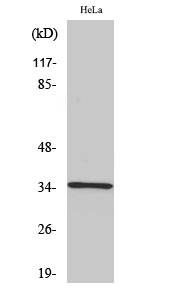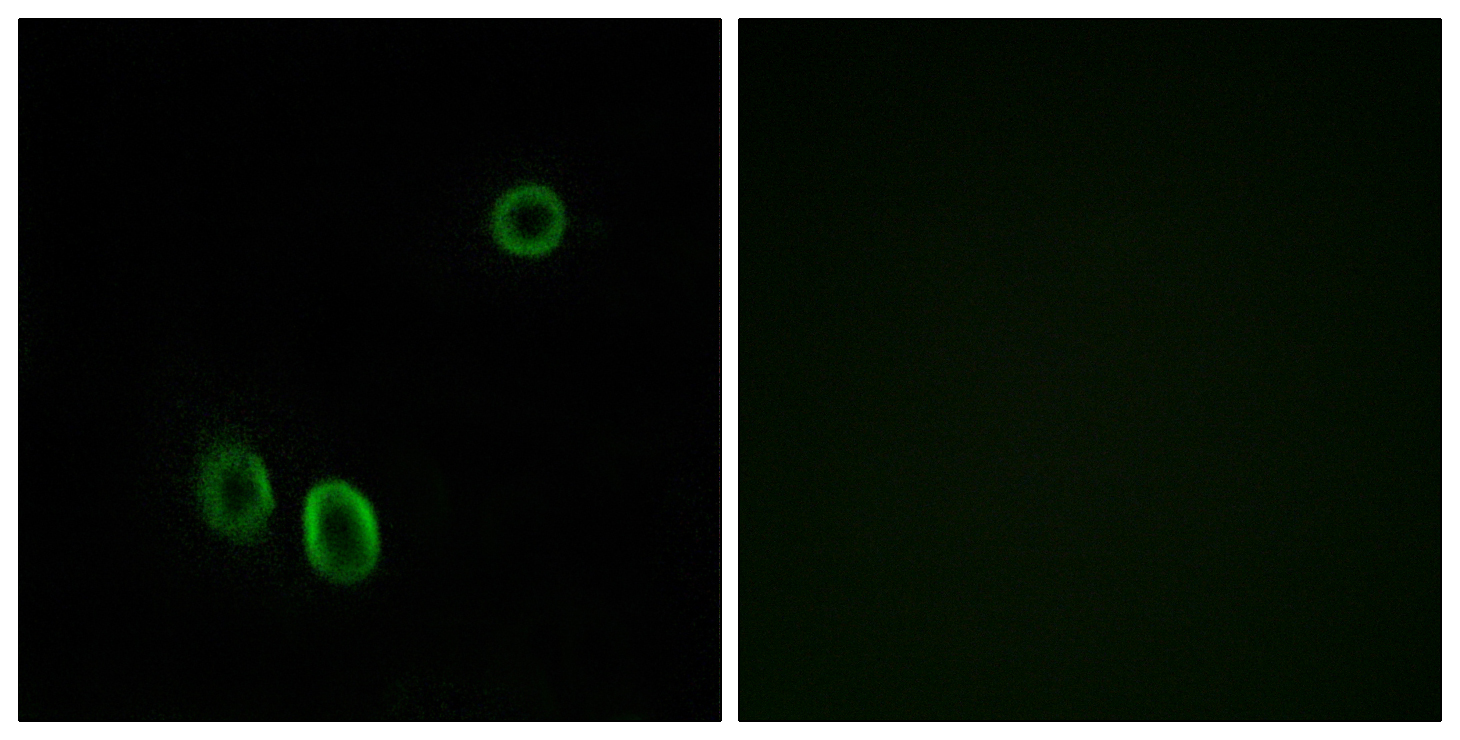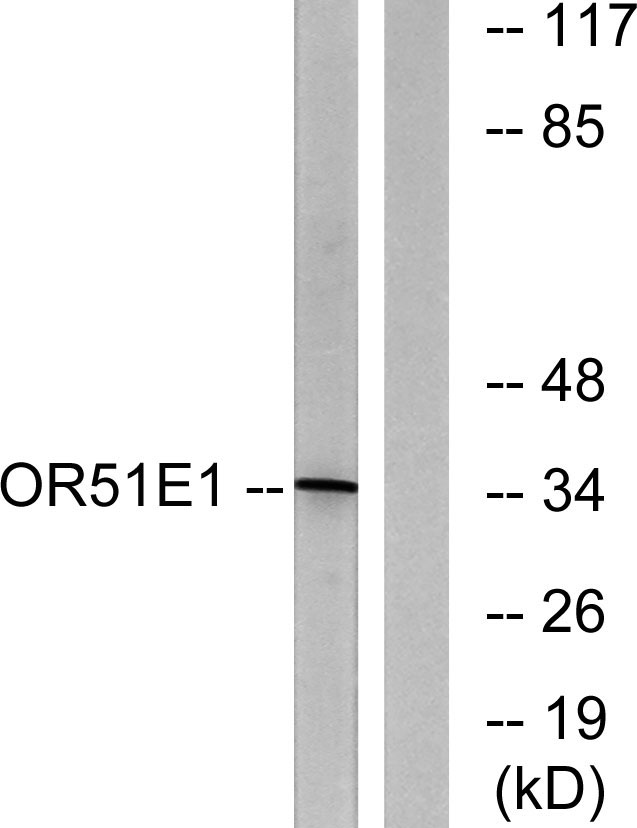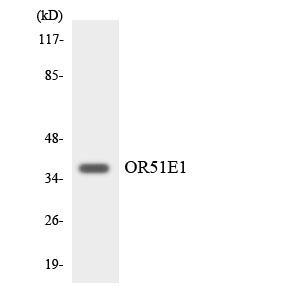D-GPCR Polyclonal Antibody
- 货号:YT1340
- 应用:WB;IF;ELISA
- 种属:Human;Rat;Mouse;
- 简介:
- >>Olfactory transduction
- 蛋白名称:
- Olfactory receptor 51E1
- 免疫原:
- The antiserum was produced against synthesized peptide derived from human OR51E1. AA range:241-290
- 特异性:
- D-GPCR Polyclonal Antibody detects endogenous levels of D-GPCR protein.
- 组成:
- Liquid in PBS containing 50% glycerol, 0.5% BSA and 0.02% sodium azide.
- 来源:
- Polyclonal, Rabbit,IgG
- 稀释:
- WB 1:500 - 1:2000. IF 1:200 - 1:1000. ELISA: 1:20000. Not yet tested in other applications.
- 纯化工艺:
- The antibody was affinity-purified from rabbit antiserum by affinity-chromatography using epitope-specific immunogen.
- 储存:
- -15°C to -25°C/1 year(Do not lower than -25°C)
- 其他名称:
- OR51E1;GPR164;OR51E1P;OR52A3P;POGR;PSGR2;Olfactory receptor 51E1;D-GPCR;G-protein coupled receptor 164;Olfactory receptor 52A3;Prostate-overexpressed G protein-coupled receptor;Prostate-specific G protein-coupled receptor 2
- 背景:
- Olfactory receptors interact with odorant molecules in the nose, to initiate a neuronal response that triggers the perception of a smell. The olfactory receptor proteins are members of a large family of G-protein-coupled receptors (GPCR) arising from single coding-exon genes. Olfactory receptors share a 7-transmembrane domain structure with many neurotransmitter and hormone receptors and are responsible for the recognition and G protein-mediated transduction of odorant signals. The olfactory receptor gene family is the largest in the genome. The nomenclature assigned to the olfactory receptor genes and proteins for this organism is independent of other organisms. [provided by RefSeq, Jul 2008],
- 功能:
- function:Odorant receptor .,similarity:Belongs to the G-protein coupled receptor 1 family.,tissue specificity:Highly expressed in prostate. Very low levels may be detected in some other tissues, such as placenta, skeletal muscle, heart, ovary and testis. Up-regulated in prostate cancers.,
- 细胞定位:
- Cell membrane ; Multi-pass membrane protein .
- 组织表达:
- Highly expressed in prostate. Very low levels may be detected in some other tissues, such as placenta, skeletal muscle, heart, ovary and testis. Up-regulated in prostate cancers.

- Western Blot analysis of various cells using D-GPCR Polyclonal Antibody

- Immunofluorescence analysis of A549 cells, using OR51E1 Antibody. The picture on the right is blocked with the synthesized peptide.

- Western blot analysis of lysates from HeLa cells, using OR51E1 Antibody. The lane on the right is blocked with the synthesized peptide.

- Western blot analysis of the lysates from K562 cells using OR51E1 antibody.







